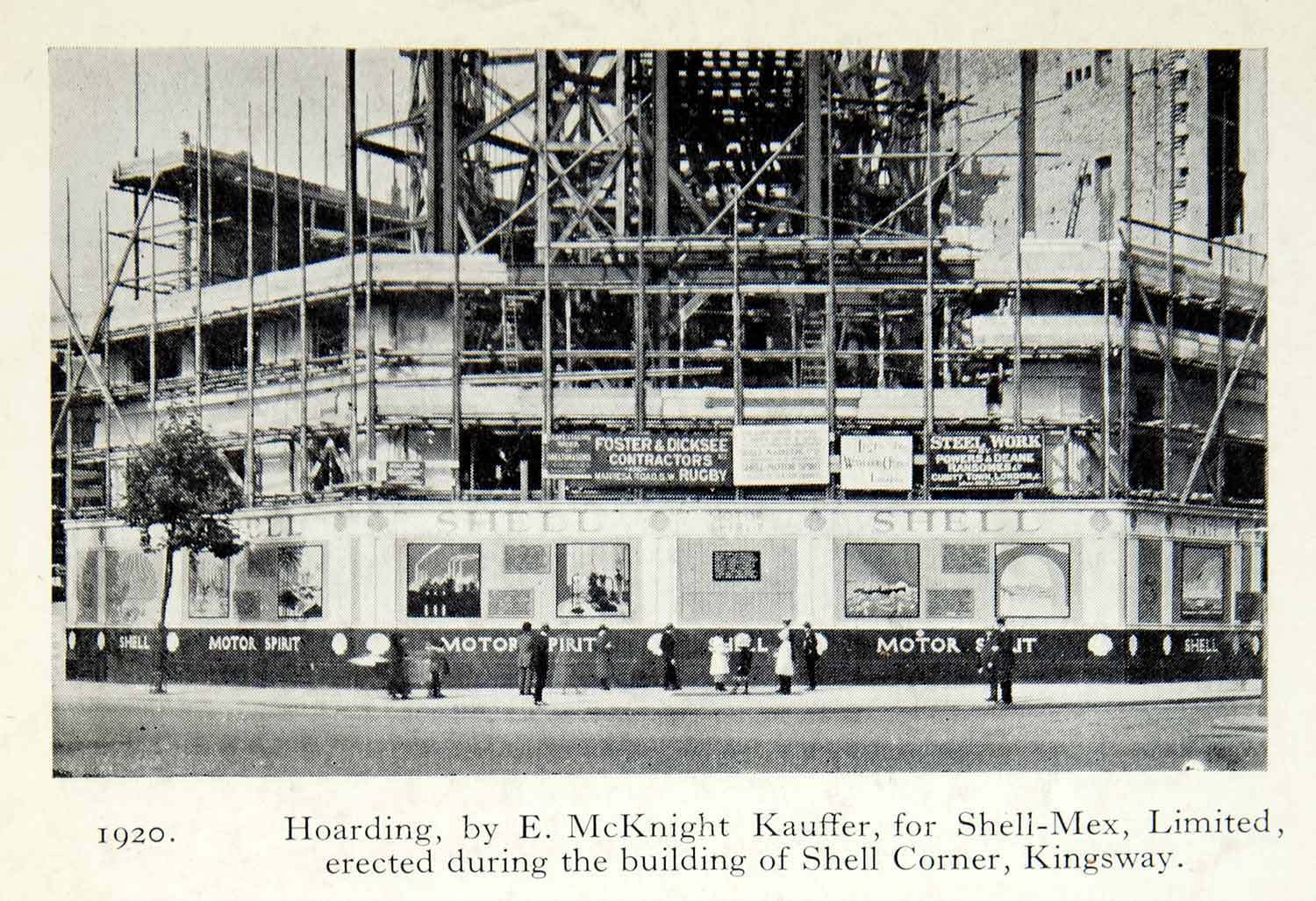Look at this picture, which has just come up for sale on eBay.
Now obviously no one is going to buy it, and not only because it’s on offer for the frankly ridiculous price of £23.61, but more importantly because it is being sold by people who butcher books and sell the plates. Ought to be a crime, but isn’t.
However, their evil doings have, this time, brought up something which I wouldn’t have seen otherwise. What the picture shows is the building of Shell Corner on Kingsway, in 1920 (about which I know nothing except that this isn’t Shell-Mex House). So Shell clearly asked McKnight Kauffer to decorate their hoardings for them. They don’t even look like standard size posters, so I’m assuming the images were specially commissioned for this location. I only wish I could read the captions.
But it’s a reminder of one of my pet subjects, that people don’t just commission posters because they like art, or design, or want to advertise their product. Companies are much more likely to make posters if they already own the hoardings. This, obviously, is a slightly unusual case, but it’s none the less the same principle in operation.

Well I can answer most of the questions you ask – all except one. The building, known as Shell Corner, Kingsway, was by the modernist architect Thomas Tait, designed in 1914-15 and built in 1919-20. Shell-Mex House on the Strand was built in 1930-31 when Shell Corner became too small. The oil paintings produced by McKnight Kauffer (probably 7 in total) depict oil refining processes and general uses of petrol. The one above the ‘M’ of Motor Spirit shows an oil refinery, the one next to it a Shell laboratory. The original artwork is oil on, what looks like, metal – maybe copper (they are in the Shell Art Collection, framed and under glass which makes it difficult to see the material). But they are 54 x 45 cm in size, not the size shown in this photograph. I can only assume that one-off printed versions were made. Why Kauffer produced them on a durable material, and at the small size is the bit I can’t answer. I have a slightly different version of the photograph. It’s taken from the same vantage point but with less people in view.
Thank you, that’s brilliant and much appreciated. But as you say, an odd material and an odd size. I shall have to try and go and see them one day.
Glad you liked the picture. I must say, I hadn’t actually looked at the building or caption and realised it wasn’t Shell-Mex house. Hence Dr G has caused me considerable frustration this morning in identifying the building; for once Google has not been very helpful! Kingsway/Aldwych was London’s greatest bit of town planning (Wren had greater ideas post-fire but he didn’t get anywhere), with a competition in about the 1890s giving rise to a dozen or more different entries. I had an extravagantly published copy of the different submissions in my hands at Bloomsbury auctions a year or two ago but I haven’t managed to find a link to it; I’ve always regretted not trying a bit harder to buy it.
Anyway, I think this is the building http://goo.gl/maps/GnS5k though if anybody knows better… It was certainly Tait, c1920 according to this book http://tinyurl.com/o9f4og4 .
I’d suggest he did them in oil as it gives better definition than watercolour, and they wanted something clean and simple to distract the viewer’s eye from the building works, and he left it to the lithographer to do the hard work of blowing them up to the huge size (6′ high judging by the people), hence the relatively small size.
Oh whither the mouse doth lead us. Sticking to the Kingsway theme, here are some before, during and after pictures.
http://www.peterberthoud.co.uk/2012/04/forgotten-images-before-aldwych-kingsway/
http://www.peterberthoud.co.uk/2012/04/forgotten-images-destruction-construction-aldwych-kingsway/
Sorry, that’s hopelessly OT, I’ll go away now!
Not at all off topic, just very interesting, so thank you. When I get a moment (and remember) I’ll see if we have the relevant old copy of Pevsner and if that sheds any light.